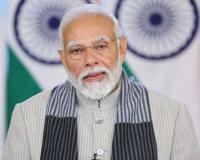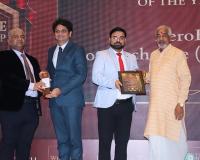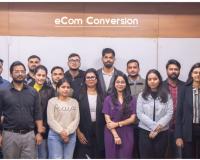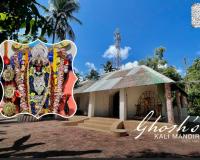ISRO concludes its Reusable Launch Vehicle technology demonstrations via LEX trio

Bengaluru, 23 June (HS): ISRO, the space agency, said on Sunday that it had accomplished a third straight success in the Reusable Launch Vehicle Landing Experiment by showing the launch vehicle's autonomous landing capabilities under more extreme conditions.
This mission simulated the approach and landing interface, as well as high-speed landing conditions for a vehicle returning from space, reaffirming the Indian Space Research Organisation's (ISRO) expertise in acquiring the most critical technologies needed for the development of a Reusable Launch Vehicle (RLV), according to the space agency. The third and final Landing Experiment (LEX-03) was carried out at 07:10 1ST at the Aeronautical Test Range (ATR) in Chitradurga, Karnataka.
Following the success of the RLV LEX-01 and LEX-02 flights, ISRO stated in a statement that RLV LEX-03 proved the RLV's autonomous landing capabilities under more demanding release circumstances (cross range of 500 m vs. 150 m for LEX-02) and more strong winds.
The winged vehicle, designated 'Pushpak', was launched from an Indian Air Force Chinook Helicopter at a height of 4.5 km from a release point 4.5 kilometers from the runway. Pushpak completed cross-range corrective manoeuvres autonomously, approached the runway, and landed precisely on the runway centerline, according to the report. Because of the vehicle's low lift-to-drag ratio aerodynamic arrangement, the landing velocity approached 320 kmph, compared to 260 kmph for a commercial aircraft and 280 kmph for a conventional fighter aircraft, it noted.
According to ISRO, following impact, the vehicle's velocity was lowered to roughly 100 kmph using its brake parachute, and landing gear brakes were used to decelerate and halt on the runway. During the ground roll phase, Pushpak uses its rudder and nose wheel steering system to ensure a stable and accurate ground roll along the runway, the company stated.
According to the space agency, this mission mimicked the approach and landing interface, as well as high-speed landing circumstances for a spacecraft returning from space, demonstrating ISRO's experience in collecting the most crucial technologies necessary for the construction of a Reusable Launch spacecraft (RLV).
The space agency said that this mission confirmed the enhanced guiding algorithm for longitudinal and lateral plane error corrections, which is required for the forthcoming Orbital Re-entry Mission.
The RLV-LEX features multi-sensor fusion, comprising sensors such as the inertial sensor, radar altimeter, flush air data system, pseudolite system, and NavIC, it claimed. Notably, the RLV-LEX-03 mission reused the winged body and flight systems from the LEX-02 mission with no modifications, proving the durability of ISRO's design competence to reuse flight systems between missions.
The mission, directed by Vikram Sarabhai Space Centre (VSSC), was a joint effort of many ISRO centers, including Space Applications Centre (SAC), ISRO Telemetry, Tracking, and Command Network (ISTRAC), and Satish Dhawan Space Centre (SDSC) SHAR, Sriharikota.
The Indian Air Force, Aeronautical Development Establishment, Aerial Delivery Research and Development Establishment, Regional Centre for Military Airworthiness under the Centre for Military Airworthiness and Certification, National Aerospace Laboratories, Indian Institute of Technology, Kanpur, Indian aerospace industrial partners, Indian Oil Corporation of India, and Airport Authority of India all provided significant support for the mission.
S Somanath, Chairman, ISRO/Secretary, Department of Space, complimented the crew on their efforts to sustain a successful streak in such complicated missions. Dr. S Unnikrishnan Nair, Director of VSSC, stated that this repeated performance strengthens ISRO's confidence in the vital technologies required for future orbital re-entry missions. J Muthupandian is the expedition Director, while B Karthik is the Vehicle Director for this successful expedition.






